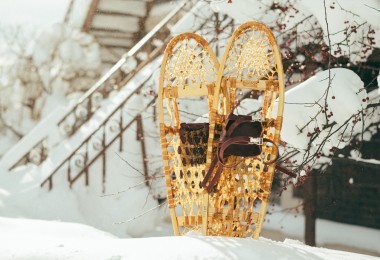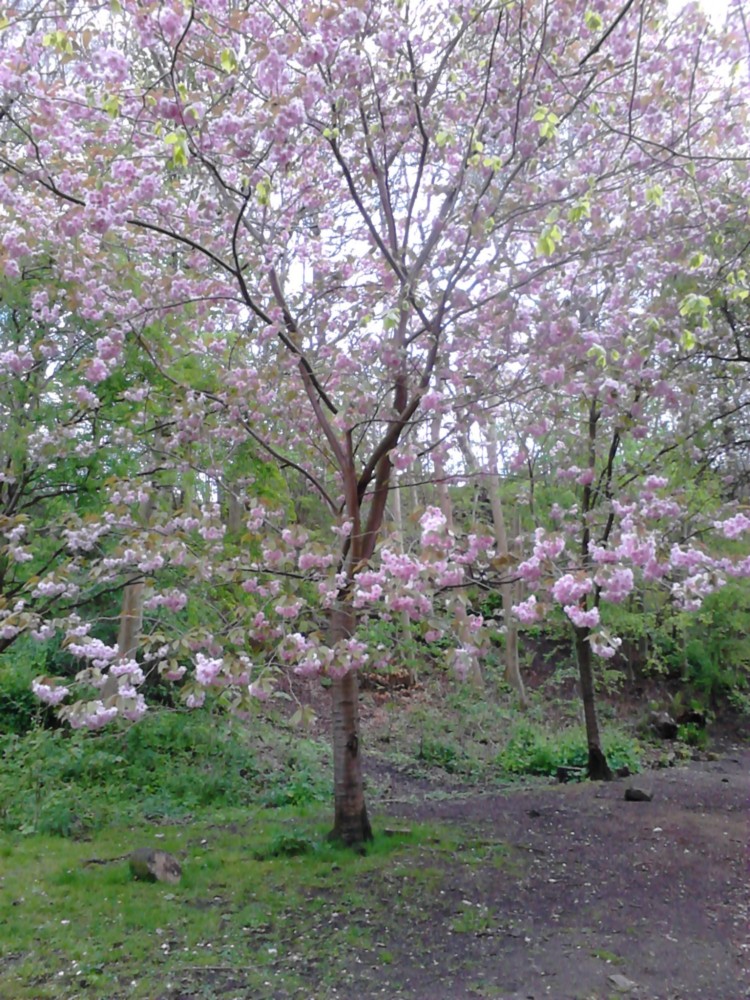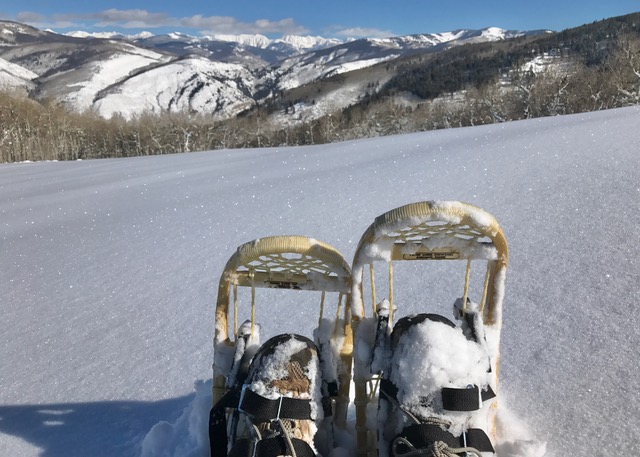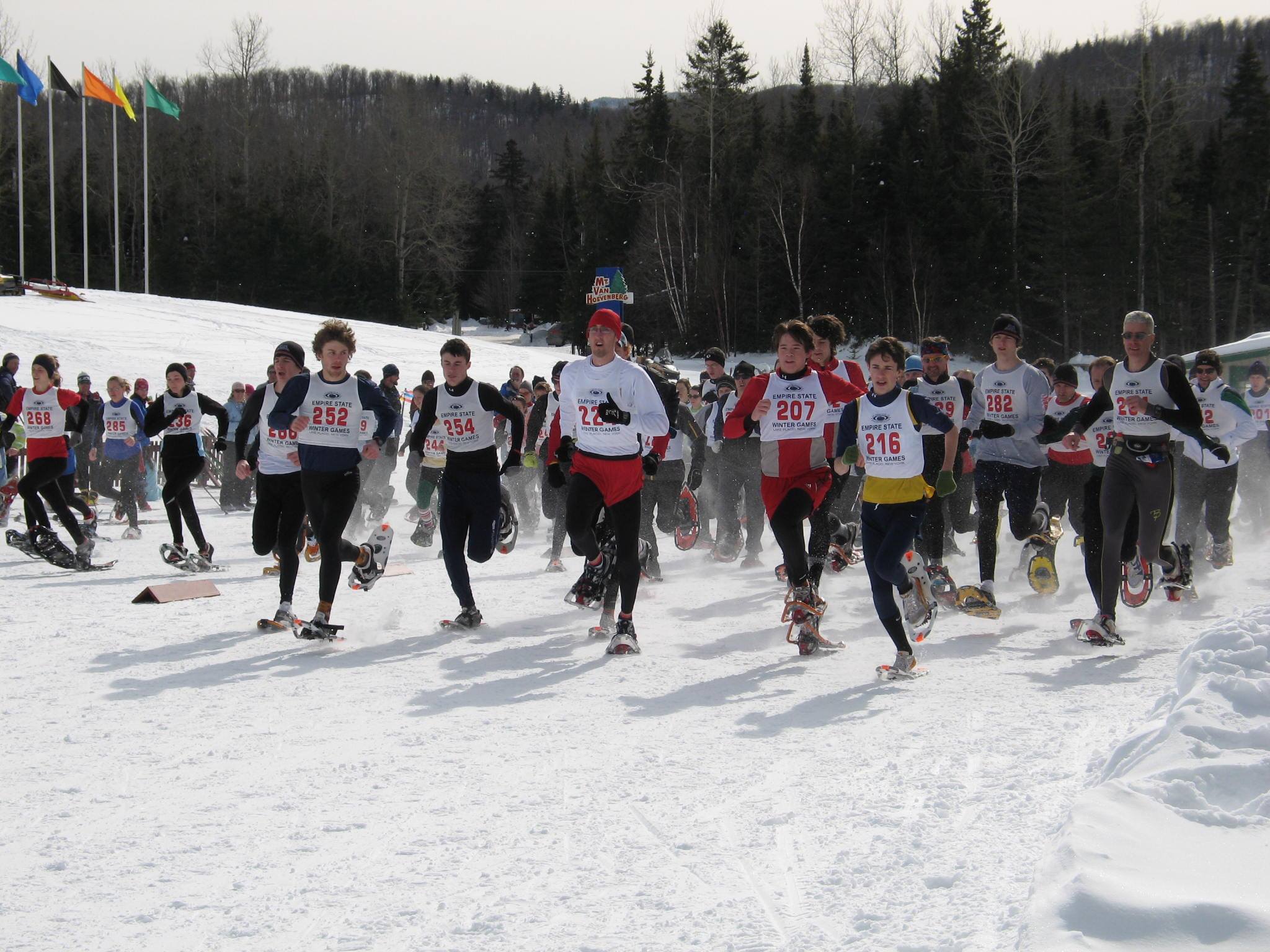We received some e-mails about the article featuring American snowshoes. And, we received a few calls from folks that I didn’t get a chance to talk with while doing my interviews. A few companies didn’t return my calls, but that’s not the only reason a company may not have made it in during my first round. It just wasn’t possible for me to connect with everyone in time to make the deadline.
(To read “American Made: Does It Matter?” Part I, visit https://www.snowshoemag.com/view_content.cfm?content_id=143.)
This month I had the time to talk with three more companies: Yukon Charlie’s, Dion Snowshoes, and Canadian-based GV Snowshoes. I once again quizzed them about their thoughts on offshore snowshoe manufacturing, the business of making snowshoes, and the sport in general.
— Dion Snowshoes, Readsboro, Vermont – http://www.dionsnowshoes.com —
Bob Dion makes racing snowshoes. And he’s not just in the business of making the shoes, he runs a good 200 miles a year on his own product. He’s modest about that accomplishment and tells me about a racer that uses their shoes that puts in 500 miles a year. “We want his shoes back at the end of the season so we can see what happens to the snowshoes under those conditions.”
Bob says he’s in a slightly different market than the big guys like Tubbs and Atlas. “A lot of our customers are buying their second pair of snowshoes from us. And we sell primarily to athletes. We think that buying a snowshoe should be like buying any high-end piece of sports equipment. You wouldn’t just go out and buy any off the shelf bicycle; it doesn’t really make sense to do that with a snowshoe.”
Dion Snowshoes is in Vermont, so Bob is well familiar with what’s happened at Tubbs. Stores in his area are full of Tubbs’ snowshoes. When asked about whether he thinks the Tubbs move to China will affect snowshoe sales, he’s doubtful. “Consumers say they want a U.S.-made product, but come shopping time, that’s not what happens. They do all their homework in their local stores and shopping malls, then go to the Internet and see where they can get the product for the lowest price.”
Being in Vermont, you’d think there’d be something of a rivalry between Dion and Tubbs, but Bob says they compete more with Atlas than with Tubbs. But he’s paying attention to what’s happening in the industry. “It will be interesting to see if K2 maintains the integrity of the brand,” he says. And he’s respectful of what both Tubbs and Atlas have done for the business. “They’ve pumped lots of money in to promoting the sport and that’s great for all of us.”
Because Dion snowshoes are targeted at a specialized market, they’re not doing mass production. Their snowshoes are built on a customization model to make sure that the racer gets the right shoe for their terrain. Bindings, frames, cleats, you can pick the components that will make the snowshoe right for the conditions you’re racing in. And while Bob stands by the durability of his shoes, he also says that the interchangeable parts make maintenance really easy. “If you break a frame, we just send you a new one. You don’t have to sacrifice your snowshoes and send them back to the factory. You just put your cleats and bindings on the new frame and you’re ready to go.”
We spend a little time talking about racing because it’s new to me – I’m all about the recreational stuff, but I’m getting to be a big fan of snowshoe racing. Bob’s been racing for years now. “We race over all kinds of terrain, rocks, mud, snow – racing is probably the worst thing you can do to a snowshoe!” Bob races next to his customers and says that he’d better put out a good product because his customers are going to be looking him in they eye when they’re on the race course.
— Yukon Charlie’s, Plymouth, Massachusetts – http://www.yukoncharlies.com —
For 10 years, Yukon Charlie’s has been building snowshoes in China. They were the first company to start building snowshoes there, according to the company.
Bill LaPierre Sr. goes there twice a year, at least and he’s really proud of their facility. “We’ve got the highest ISO rating possible – our factory is top rated for cleanliness and safety. We’ve had other U.S. manufacturer’s come and check out our facility just to see what we’ve done. We’ve set the standard for other companies who are building their products in the Far East.”
It took two years for Yukon Charlie’s to get their factory up and running. Now they’re down to a one-month turn on their orders, plus delivery time. “We keep lots of our components in stock and we do a lot of shipping directly to our retailers,” he says when I ask him about the challenges of getting product in to a market that’s driven by weather conditions.
“We mark all of our snowshoes quite clearly with the country of origin,” says Bill in response to my questions about American made versus Chinese made snowshoes. “And our customers are really satisfied with our products. You can’t hide from them with the Internet – if they don’t like what they’re getting, they’d let us know. We’ve got loads of testimonials from people who couldn’t be happier with their snowshoes.”
Bill tips his hat to Atlas and Tubbs for what they’ve done for snowshoeing as a whole but says that they’re fierce competitors with both. He talks a lot about price and quality – the value equation – and says that Yukon Charlie’s makes it possible for an entire family to get in to the sport without breaking the bank. The “standard” Yukon Charlie snowshoe is (currently) $99, and they make a kids model for quite a bit less.
“We’re not revolutionary,” Bill admits, up front. “We build a user-friendly snowshoe with an appealing design and we back it up with first rate customer service. And we sell to customers that are looking for a quality snowshoe at an affordable price. We make it possible for a guy to put his whole family on snowshoes. I think that’s good for the sport. We make it accessible to a whole range of people who would otherwise be “priced-out” of participation.”
— GV Snowshoes, Loretteville, Quebec, Canada – http://www.gvsnowshoes.com —
“The snowshoe business is doing really well,” says Eric Beaulieu from GV Snowshoes. “There’s lots of demand and right now, there’s room for everyone. But five years from now – I don’t know what’s going to happen.”
GV has been making snowshoes in Quebec since 1959. They have strong ties to the Canadian snowshoe tradition. They’ve been making their snowshoes on the Huron reservation since the beginning. Eric talks about their methods as a fine craft, a skill that’s been passed through generations of snowshoe builders.
GV maintains a small presence in the U.S., primarily in the sportsman hunting and fishing market, but remarks that for their U.S. distributors, the “made in Canada” label is a selling point. “In Canada they do care where the shoes are made. People can relate to a Canadian-made product. People who are new to the sport, they look at price point first, but more experienced snowshoes do care about where their shoes are made. And for our European distributors – those guys ask us if our snowshoes are made in Canada.”
Eric doesn’t overlook the contribution of the big guys to the industry, saying they’ve helped everyone with their marketing of the sport, but he is concerned about what’s going to happen over the next few years as managing inventory becomes crucial. He’s got a lot to say about business in China and the impact of offshore manufacturing in general upon the North American economy.
He talks about the logistics of shipping vast quantities of product out of limited port facilities. It’s not just snowshoes, it’s everything – electronics, clothing, all kinds of consumer goods – that are crossing the Pacific. Just the traffic in the ports alone can mean that snowshoe production for next season has to start early in the year. He asks about what will happen in bad snow years – will inventory get dumped? Will prices drag the whole market down? He doesn’t know, but he’s keeping a close eye on it.
Eric also mentions something I hadn’t heard from anyone I’ve talked to: He says he’s seen lots “made-in-China” snowshoes that aren’t backed by industry experts. This worries him not so much for himself, but for consumers that are new to the sport. These companies may be able to get a $29 snowshoe on the market, but is it made of high-test aluminum? Is the decking going to hold up in the extreme conditions that a snowshoe goes through? If this is the type of snowshoe a new participant in the sport buys, they could easily be put off the sport because they’ve started out on cheap – we’re not talking low price here, we’re talking cheap – gear.
After we talk industry, we talk a little bit about the sport in general. “If you can hike, you can snowshoe,” he says. “This is what has made the sport so popular.” And he’s really in to the poetic aspects of it. “You can get out there and see your regular hikes in a whole new perspective. It allows you to go out and see undiscovered country, you don’t need groomed trails, you can commune with nature.”
— Conclusions —
I’m standing by what I said last month: It’s not clear to me that I care where my snowshoes are made. I’ve talked to a lot of people about their snowshoes and in the end, there’s one thing that matters above all other issues. Am I on the right snowshoe for my sport.
Unfortunately for my wallet, I’ve concluded that this means I probably need more than one pair of snowshoes. My hiking snowshoes are great for trails here in the Pacific Northwest where the snow is packed and heavy, but that deep powder I found myself in over the winter just cries out for flotation, and in a big, big, big way. I’m pondering getting myself a pair of nice wood-frame Ojibway shoes for next season when I’m back in the big snow.
The first person I talked to when I started to make calls on this subject was Kris Kaprowski at Redfeather and I’d like to quote him again. “Snowshoeing is a really friendly industry,” he said. He was right. If you’re thinking about getting yourself some snowshoes and trying to decide what to buy, talk to the people that know the sport. Don’t go blindly shopping around for cheapest price or country of origin issues; there are so many other factors that you should consider.
I really believe the people I spoke with when they said that they really want us to have the best possible experience on the snow.





